Are your rugs looking a bit worse for wear after heavy foot traffic and daily spills? Fortunately, there is an easy and cost-effective way to revive them: beating! Yes, that’s right – the same act of vigorously smacking dust out of a carpet with a stick or tool has been around since Medieval times. It may sound old-fashioned, but it really works! In this blog post, we will explore why you should beat a rug as well as provide advice on how to beat a rug properly so that you can say goodbye to dreary carpets and hello to restored floors. So get ready to take some bold action against dirt – here’s everything you need to know about beating rugs!
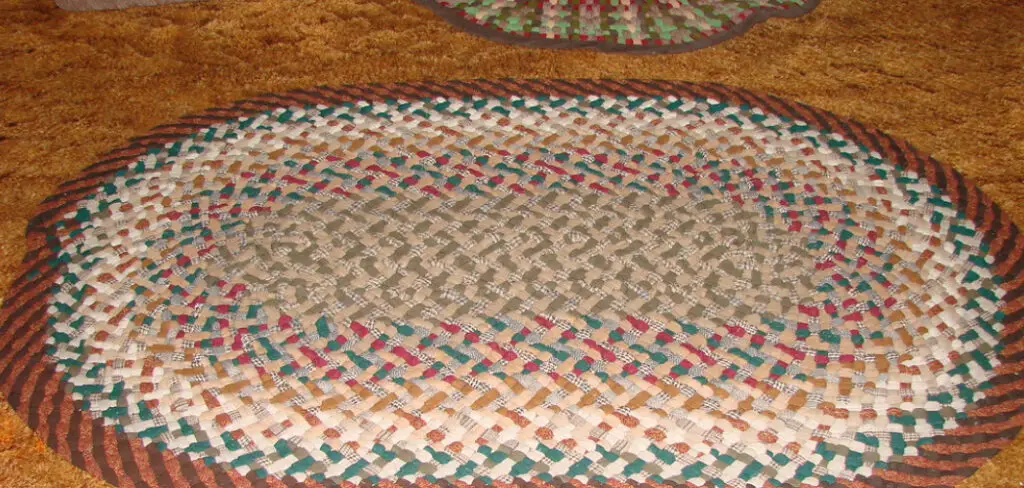
Does Beating a Rug Clean?
Beating a rug may seem like an old-fashioned way to clean it, but does it actually work? The answer is yes and no. Beating a rug can help to loosen dirt and dust embedded in the fibers of the rug, which can then be vacuumed up more easily.
It also helps redistribute the fibers of the rug, which can help prevent it from matting down over time. However, beating a rug is not an effective way to thoroughly clean and remove surface dirt, debris, and bacteria from the rug, so regular vacuuming of the rug is still necessary.
If you do choose to beat your rug to help freshen it up from time to time, there are a few tips that will make the process easier and more effective: Make sure you have a firm grip on the edges of the rug when beating it – this will ensure that it doesn’t move around too much while being beaten.
Beating should be done in short bursts rather than all at once – this will give the dust particles enough time to escape from the fibers of the rug. Lastly, it is important that you use a gentle motion when beating your rug so as not to cause damage to the fibers.
In summary, beating a rug has its benefits – it helps loosen dirt and dust from the fibers and can help prevent matting over time. However, it should be used in combination with regular vacuuming for the best results in keeping your rug looking clean and fresh. With these tips in mind, you’ll be sure to have a spotless rug in no time!
10 Methods How to Beat a Rug
1. Vacuum the Rug:
To start, it’s important to vacuum your rug first. This will help remove any dirt or dust that may be trapped in the fibers and make beating easier. Make sure to use a vacuum cleaner with an appropriate adjustable brush setting for your rug type. Vacuuming also helps to loosen any dirt particles that have built up over time, making them easier to remove when you beat the rug.
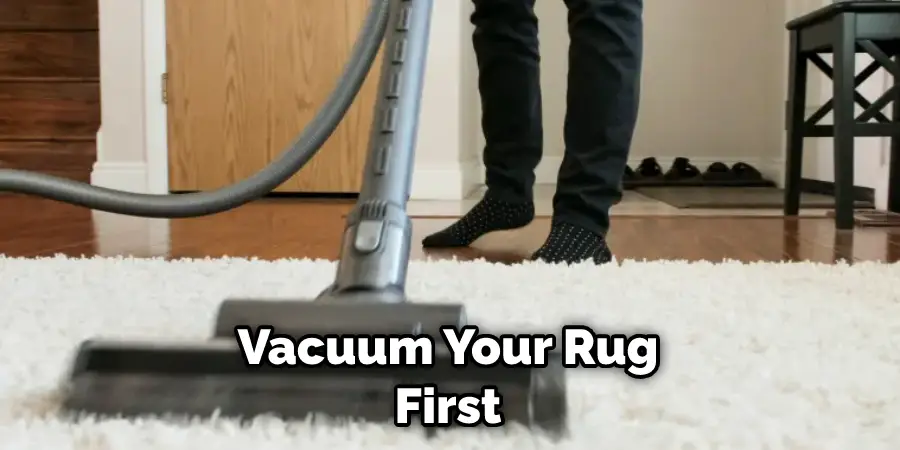
If your rug is made of a more delicate material, use the lowest suction setting available. Though vacuuming is not required for beating a rug, it does make the job easier and more effective. Make sure to vacuum the rug both vertically and horizontally for the best results.
2. Remove Loose Objects:
After vacuuming, check over your rug for any foreign objects that might cause damage when beating it, such as stones or twigs. Carefully pick out these items by hand and set them aside until later.
This will help protect your rug from damage and make the job of beating much easier. If you are unable to pick out the objects, use a pair of tweezers or a magnet. Once you’re sure there are no objects in the rug that can cause damage, you can begin beating it. However, if there are still some objects that cannot be removed safely, it’s best to remove the rug and beat it outside.
3. Hose Down the Rug:
In many cases, hosing down the rug before beating can be beneficial in removing stubborn dirt particles and larger debris that can’t be removed with a vacuum cleaner. Make sure to use either cold water or lukewarm water at most; hot water could cause damage or fade on some rugs and fabrics.
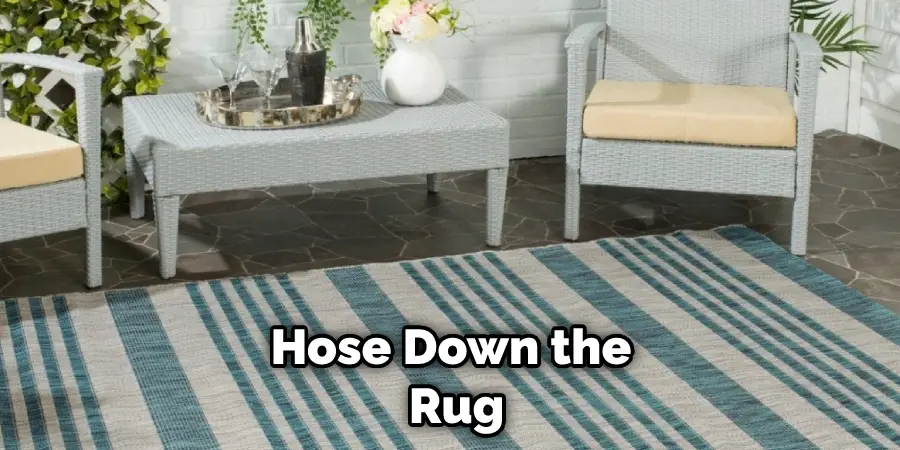
You can do this either outside on a lawn, over a tarp, or even inside if you have a large enough area with a floor drain nearby for runoff water. Once the rug is soaked, roll it in a towel to absorb excess water before beginning to beat. Although this step is optional, it can save you time and energy later on.
4. Consider Dry Cleaning Solutions:
If you have an especially delicate fabric or vintage piece of furniture, you are beating; dry cleaning solutions may provide more effective results than simply hosing down the item first. Look for gentle formulas specifically created for antique rugs or fabrics and follow directions carefully before proceeding with any wet treatments afterward.
Often, a dry cleaning solution can help to lift away dirt and debris that may otherwise be trapped deep into the fibers of your rug. It also helps to minimize the risk of full-on fading in particular colors, allowing you to keep your rug looking bright and vibrant. With the right solution and techniques, you can easily beat a rug without having to worry about causing additional damage.
5. Hang Your Rug Outdoors:
Once you’ve finished pre-treating your rug, then it’s time to hang it outdoors in preparation for beating it one half at a time (or less). It is best to hang the rug on something strong enough to secure its weight while allowing air circulation around the entire surface of the fabric so that both sides can be effectively treated during each beating session.
Wooden poles work well if they are set far enough apart from one another so that all sections of fabric are accessible and reached by your tools during each session without stretching too tightly against one another as you work around them. If you don’t have access to outdoor space, try hanging your carpet in a large garage or basement with plenty of air circulation.
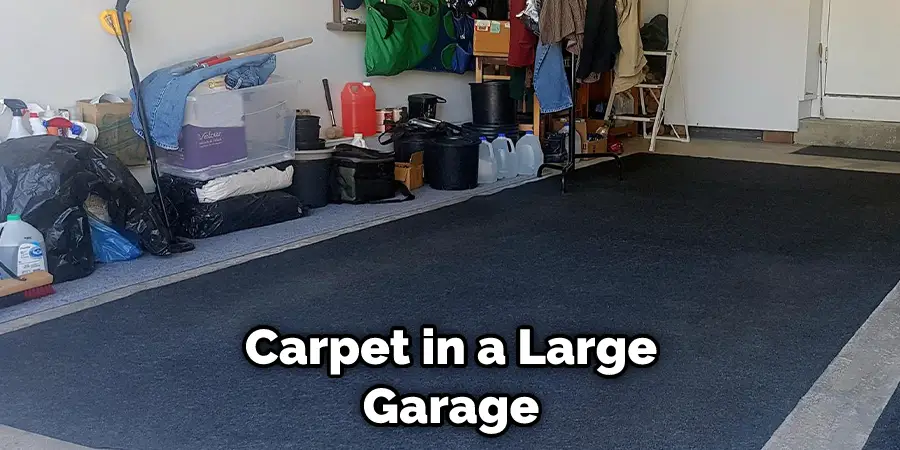
Once the rug is securely hung, you can begin to beat your rug with a broom or beater. Begin at the top of the rug and work your way down one area at a time, ensuring that the rug is evenly treated on both sides. Be sure to use light but firm pressure when beating the rug to ensure that the dirt and dust are loosened without damaging the fabric.
6. Use Two Tools Interchangeably:
Depending upon which kind of fabric your rug is made from and what kind of material needs to be removed from its fibers (dirt versus pet hair versus pollen particles), there are several kinds of tools people traditionally have used interchangeably when beating rugs outdoors.
Soft brushes (such as those made from natural bristles) for lighter fabrics like silk or linen; heavy-duty scrapers like broom handles fitted with paddle-end pieces of wood ideal for tougher fibers such as wool; and long-handled brooms equipped with higher bristles perfect for reaching deep into carpets while keeping hands away from more delicate materials like fine cotton.
All these tools should be kept in good working order prior to beginning any treatment session and rotated accordingly depending on how much force needs to be applied at any given moment in order to achieve maximum effectiveness throughout each step of the process.
7. Beat One Half at a Time:
Once everything is properly prepped and ready to go, begin by gently but firmly starting in one corner, beating half a side section of the rug until all dust has been removed layer lying underneath the surface’s fluffier top layers – repeat this same motion step two opposite side section too until both halves have been completed.

Doing this helps ensure no areas missed being addressed, which could result in leaving soil still embedded within fibers after the job is done. While beating, check the corner of the rug to make sure dirt is not piling up. To prevent this, shake it out every 20 minutes or so. This will help ensure an even texture and an overall clean rug. When finished, one side should be free of dust and debris while the other awaits its turn.
8. Shake Out Dirt Particles:
When finished with each side, shake out dust particles loose from between fibers onto the ground below, where continue sweeping/brushing away debris collected once the task is complete. This prevents residue buildup anywhere else during rest treatment steps–especially important if using certain dry cleaning solutions beforehand that may linger and leaves tough stains behind if not properly collected and taken care of immediately afterward.
After all, dirt is removed from the rug; it’s ready for a rinse or dry-cleaning process. While shaggy rugs may require a more thorough shake-out process, flat-weave types are simpler and less time-consuming. This step is key to the rug-care process and should not be overlooked.
9. Flip Over & Repeat Process:
Once both sides beat, flip the carpet over and repeat the above steps in the same manner – always remember to keep tools clean switching fabrics to avoid spreading the remaining dirt particles lingering longer needed onto newly cleaned parts fibers just worked through again, risking damaging already treated surfaces causing more thorough job next time round! Be sure to use a mild vacuum cleaner if needed, but be aware strong suction can pull away fibers.
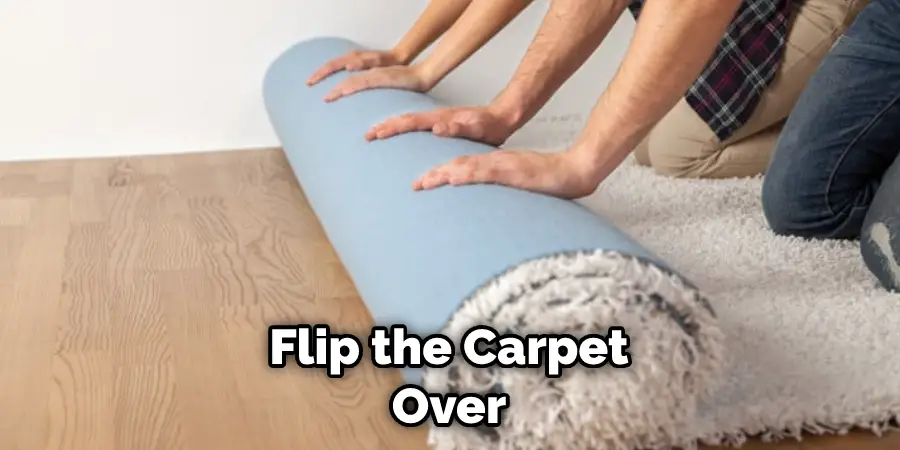
If working in larger areas, remember to divide sections into manageable chunks; otherwise, fatigue can set in quickly, making the process seem longer than necessary! The more effort put in now, the better results later when it comes time to enjoy a freshly beaten rug. Now that you know how to beat a rug, go out and make carpets shine!
10. Let Dry Thoroughly Before Moving:
Before returning indoors, letting carpets dry thoroughly outside usually takes at least 24 hours, depending on climate conditions, humidity levels, etc. During the season may need extra drying time factors into account to prevent mold growth from developing under damp conditions, caused moisture to be trapped underneath fibers overnight, leading to potentially bigger problems future!
To guarantee that the rug is completely dry, you should use a fan and dehumidifier outside for an extra boost of air circulation. Additionally, some homeowners also prefer taking extra precautions like turning the rug over after the beating process so that both sides be exposed to dry air. This way, you will have a much better chance of avoiding any moldy surprises!
Some Common Mistakes While Beating a Rug
1. Not Using the Right Tools.
In order to effectively beat a rug, you need to use tools that are specific to the job. Traditional rug beaters are made of wood, metal, or plastic and have long handles with a flat area at the end to hit the rug. Make sure you pick the right tool for your rug, as not doing so could cause damage to it.
2. Over Beating
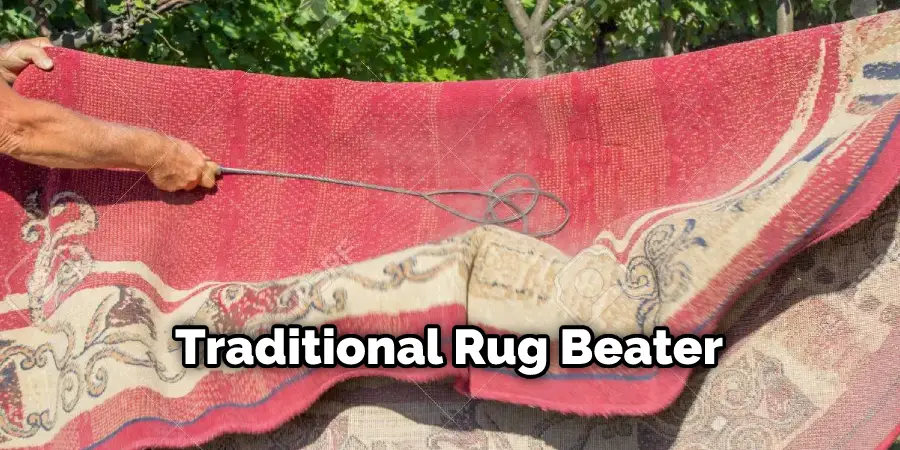
You don’t need to beat a rug too hard in order to clean it properly. Too much beating can lead to matting and damage to the fibers of your rug. Instead, use light strokes in an even pattern over the entire surface area of the rug.
3. Not Cleaning Regularly
Beating removes dust, dirt, pet hair, and other debris from your rugs and carpets, but regular cleaning is still necessary. Vacuuming regularly and having your carpet professionally cleaned will help maintain its longevity and keep it looking beautiful for years to come!
Conclusion
Beating a rug is an essential part of maintaining one. Not only does it remove dirt and grime, but it also helps to prolong the lifespan of your rug. When beating a rug, be sure to use a gentle stroke and avoid hitting the fringe or tassels. With a little care, you can keep your rug looking great for years to come! We hope this guide on how to beat a rug was helpful. Please share it with your friends on social media if you find it useful. And be sure to check back here soon for more informative guides like this one.
You can check it out to Repair Patio Furniture


